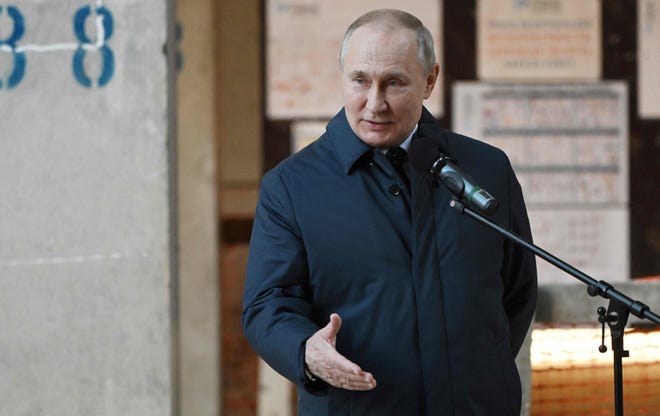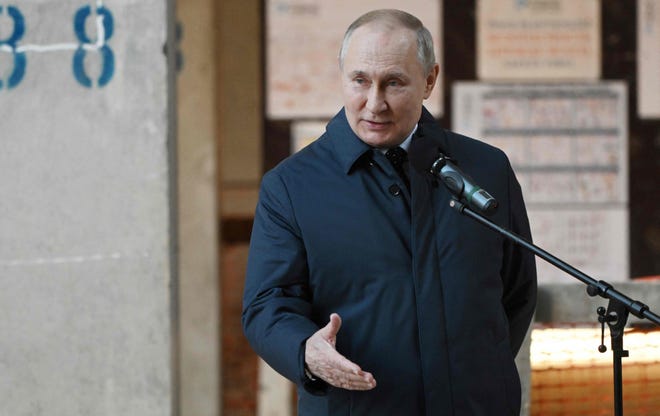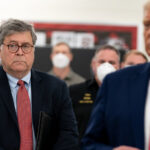As Russian troops continue their invasion of Ukraine, Russian President Vladimir Putin has reportedly put his nuclear forces on high alert.
Since Russian military forces began invading Ukraine on Thursday, the United States and its NATO allies have imposed multiple sanctions on the country in hopes of de-escalating the invasion.
“(Vladimir) Putin is the aggressor. Putin chose this war. And now he and his country will bear the consequences,” Biden said during a White House news briefing on Friday.
In response to these economic sanctions and “aggressive statements” by NATO powers, Putin on Sunday said he ordered his country’s nuclear deterrent forces prepared for increased readiness and told his top officials to be ready for a “special regime of combat duty.”
But what is “nuclear deterrence”? Here’s what you should know about it, as well as nuclear capabilities of Russia and NATO allies.

THE NEWS COMES TO YOU: Get the latest updates on situation in Ukraine. Sign up here.
WHY IS RUSSIA INVADING UKRAINE?: Could this be the start of WWIII? We explain.
BACK IN THE STATES: What is the draft? And can it ever be reinstated here?
What is nuclear deterrence?
Nuclear deterrence is an ideology dating back to the Cold War used to prevent any nuclear aggression.
As the U.S. and then-Soviet Union each raced toward the creation and building of nuclear weapons, the U.S. adopted a strategy of nuclear deterrence, meaning if the Soviet Union or any nation attempted to attack, the U.S. would respond swiftly and launch an even bigger attack.
Putin is using the same strategy. The Russian president has indicated that if the U.S. and other NATO allies continue to impose heavy sanction against the Russian economy, or if they attempt to aid Ukrainian forces, Russia will be ready to respond with nuclear weaponry.
Putin had previously said any countries that “hinder us” will face “such consequences that you have never encountered in your history.”
What is DEFCON?
An acronym for Defense Ready Condition, DEFCON is what the Pentagon uses to indicate the level of threats the country faces from other nations, which then determines readiness for any potential response.
There are five levels, from DEFCON 1 to 5. DEFCON 5 is the lowest state of readiness, while DEFCON 1 is maximum readiness, meaning a nuclear war is about to begin or already has begun. Although speculation abounds, officials never publicly state which DEFCON level the country is under, for security reasons.
The U.S. has never reached DEFCON 1. The highest it’s thought to have been is DEFCON 2, which reportedly occurred during the Cuban Missile Crisis. Although there is no official declaration of the country’s DEFCON status, speculation about it abounds on the internet.
Russia has its own version of DEFCON, although its stages are unclear. Dmitri Alperovitch, founder of The Alperovitch Institute for Cybersecurity Studies at Johns Hopkins University and former chief technology officer of cybersecurity group CrowdStrike, said in a tweet that Russia has four levels. Putin’s orders put Russia at the Elevated level, the second level similar to the U.S.
More:What is NATO? Military alliance in spotlight as Russia tries to forbid Ukraine membership
Does NATO have nuclear weapons?
NATO members have nuclear weapons, but the organization says the sole purpose of having them is for deterrence. These weapons mainly come from the U.S., which has full control of any weapons deployed in Europe.
“Should an adversary decide to attack NATO, they must not only contend with NATO’s decision-making, but also make a judgment about decision-making from the leaders of the United States, United Kingdom, and France,” the organization says on its website.
However, a senior Defense Department official told reporters on condition of anonymity that Russia is under no threat from the U.S. and NATO allies.
Contributing: USA TODAY staff reports
Follow Jordan Mendoza on Twitter: @jordan_mendoza5.




